Designing for a Transformation Economy
By: Alberto Barreiro & Andy Sontag
Mindsets that will support you and your organization to create ripples of positive change
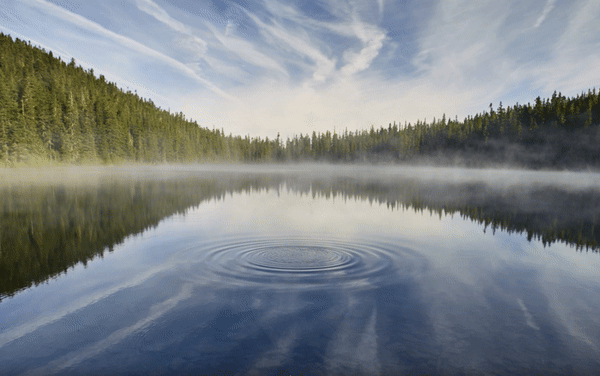
Cinemagraph by Tyler Lyon
Sitting in a park by an ancient willow tree bowing over a still lake, across the table from Dennis, an agitated senior executive from Volkswagen. He told me that he was responsible for over 10.000 people, and wanted to create a more sustainable future. He took off his sunglasses, and confessed that he did not know where to begin. I laughed and threw in a stone in the lake, the ripples expanded in perfect circles outwards. This was 4 years ago and more people share the agitation of Dennis, a gap between his values and the work he does. Our global culture is in flux. Customers increasingly expect businesses to do more than create profit. But the challenge that many leaders and designers face is; how to structure and guide this positive transformation? The purpose of this article is to share the mindsets, thinking and finally a tool that we have found useful for those that want to drive positive change in society.
What ripples of change do you want to create?
1. Moving organizations from self-interest to shared interest
It is not from the benevolence of the butcher, the brewer, or the baker that we expect our dinner, but from their regard to their own self-interest. We address ourselves not to their humanity but to their self-love, and never talk to them of our own necessities, but of their advantages
– Adam Smith
The dominant economic reality is still defined by a very particular way of understanding the relationship we have between ourselves and the world. It is a model that dictates that self-interest is the only legitimate and objective motivation for establishing a relationship between parties, between a company and its customers and between one nation and another. The principle of self-interest dominates our relationships and gives rise to an economic model which, despite its advantages, ends up generating ripples of undesirable consequences. The catastrophic loss of biodiversity is the logical result of a culture that is concerned exclusively with the extraction of value, without considering the interests of others and of the ecosystem in which we live. A model that seems to have been conceived by the mind of a psychopath, which is why Alberto Barreiro says the word that best defines this time is not so much the Anthropocene but the “Psychopatocene”.

Companies could bring business and society back together if they redefined their purpose as creating “shared value”—generating economic value in a way that also produces value for society by addressing its challenges. A shared value approach reconnects company success with social progress.
-Porter & Kramer, Harvard Business Review
The emergence of an economy based upon positive Transformation depends on answering to: how do we move from an economy built on self-interest to an economy built on shared interest?
1.1 The Importance of Meaning
This is where the idea of meaning comes into play. The change in the direction of the relationship from divergent (self-interest) to convergent (shared-interest) occurs when we define our organizations based on the positive and relevant impact they have on others. This is what we call purpose or meaningful outcomes.
From this change of perspective, the goal of a company is to ensure that this relationship space grows and flourishes, taking action to create impact capable of engaging with its stakeholders in a lasting, trustful, relevant and meaningful way. It also tells us that an organization’s main metrics would be associated with that relationship, a relationship that is grown through the ability of the organization to create meaningful outcomes. Profit will emerge from the successful translation of the relational metrics into business metrics.
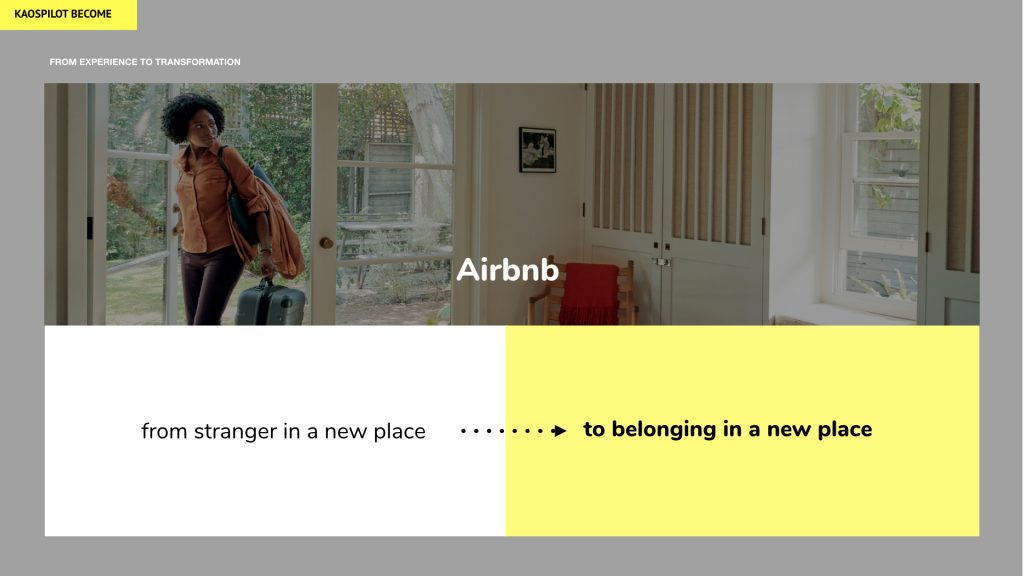
An example of this is how early Airbnb was deeply focused on the purpose of creating a deep experience of ‘Belonging’ for their customers. A relentless focus on designing the Airbnb experience based on trust, community and belonging enabled Airbnb to create a space of shared interest with their customers. One of the founders, Chesky writes:
“We should be able to offer more than people sleeping in one anothers homes. We imagine a world where everyone of us can belong anywhere. A world where you can go to any community and someone says, “Welcome Home.”Where home isn’t just a house, but anywhere you belong.”
Chesky now has a company valued at over 100 Billion dollars, and guests have booked a total of 900 million stays using his platform. Needless to say that focusing on shared interests can be big business. Source here.
Through starting small and focusing on positive relationships, transformation spreads across layers and time as ripples spread in water. In the Airbnb example, the transformation is from a visitor that feel like a tourist, to relationships of shared interest that create the experience of belonging in a new place.
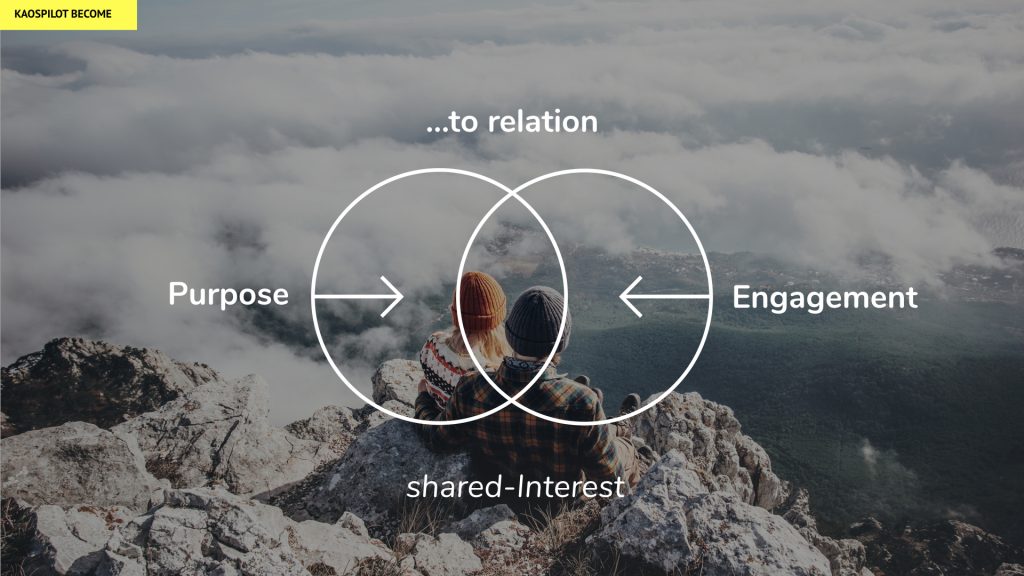
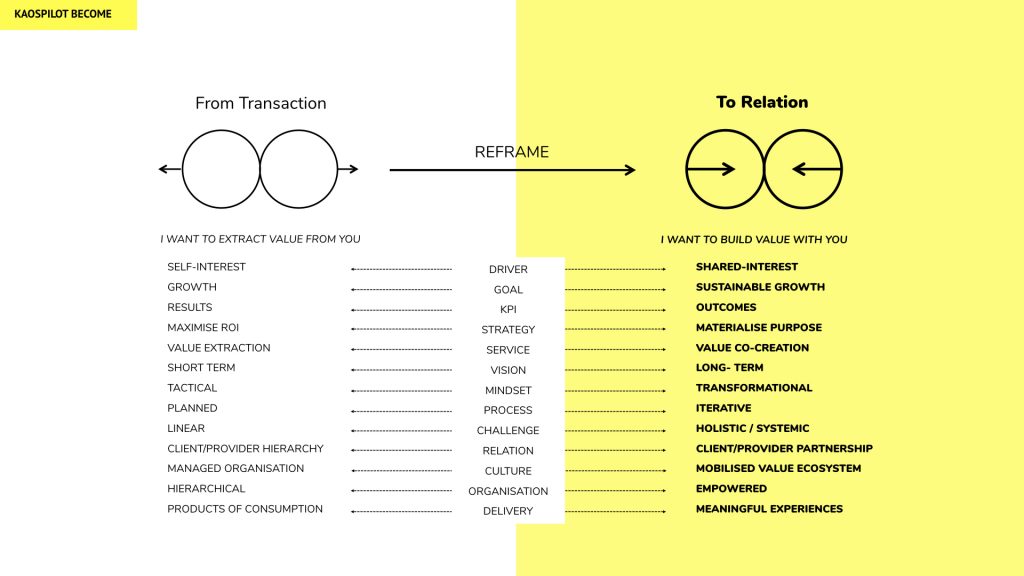
2. Defining the Transformation Economy
The Transformation Economy is a stage of economic and social development that comes from establishing ongoing meaningful relationships between organizations, people, society and the planet based on the shared purpose to improve mutual well being.
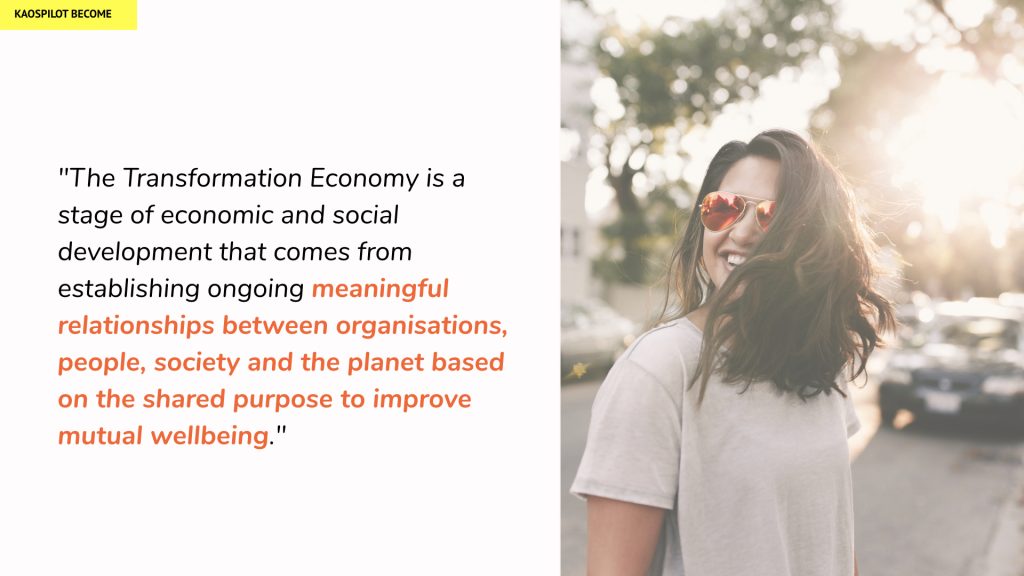
The Transformation Economy is the ultimate consequence of many individuals engaging with experiences, products and services aimed at improving their lives for the better. This paradigm shift of where people invest their time and money will create expanding ripples of transformation. The goal that we should work toward is a culture and state of economic exchange in which organizations establish meaningful relationships with people built on a shared interest, with the aim of improving people, society, and regenerating the natural environment.
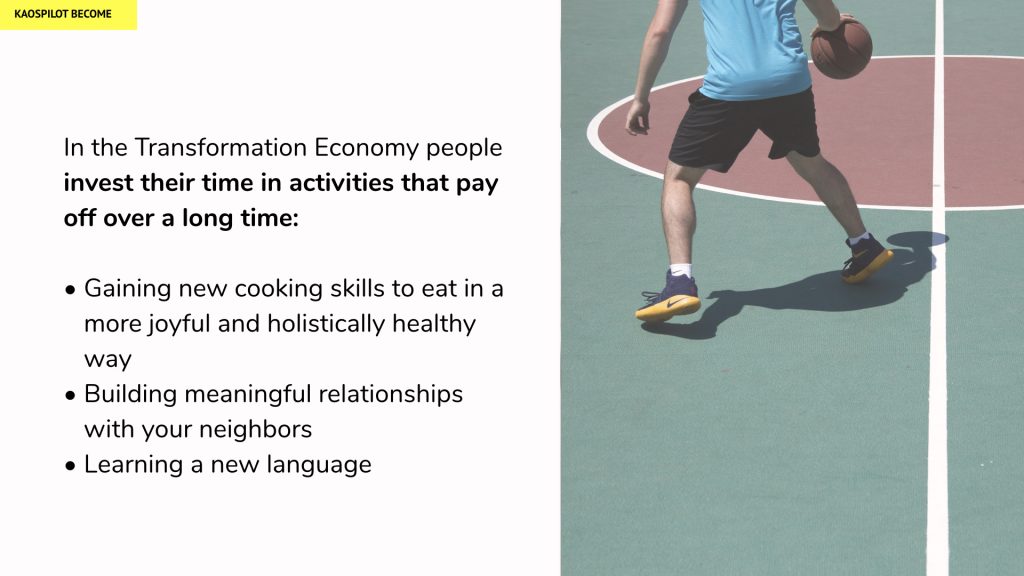

Pine and Gilmore pointed towards the Transformation Economy in their pioneering exploration of the Experience Economy. The discovery we have made in our work as Experience Designers is that by introducing purpose and meaning as essential components of the design process, these experiences become transformational.
The Pandemic Accelerates the Transformation Economy
Reflecting on the pandemic in his Team Human podcast, Douglas Rushkoff cleverly said that, “the worst thing that could happen to brands is to have people in lock-down for months thinking about what they really need”. In the midst of the strange times during the pandemic, people have the rare opportunity to reflect on what we really need and to think about what matters. The outcome of this is that we question the status quo.
As part of one of our webinars, we conducted a survey about what people have missed during the lockdown. The answers tend to cluster around those aspects that bring us significant and transcendent value: community and belonging, freedom, creativity, being closer to nature, autonomy, connection, discovery, self-actualisation, hope, joy, reflection, fairness, etc. … . In short, we had the opportunity of rediscovering something very basic: that people, when given the opportunity, want to become a better version of themselves.
Learn more about our Design for Transformation program here
2.1 What is a Transformational Experience?
Transformational experiences open doors that were once closed, and leave those doors open. According to the eminent Harvard based Developmental Psychologist Robert Kegan, becoming an adult isn’t about learning new things, adding things to the ‘container’ of the mind. It’s about transformation — changing the way we know and understand the world, adding new meaning-making lenses that evolve and add depth to the way we experience the world and what it means to be human”?
Creating a transformative experience is about evolving the way people make meaning. By transformational experiences, we are talking about those that enable the expansion and growth of a person. A transformational experience never really ends, meaning that when someone transforms, they become something new. To become is the outcome of transformation. This is why we named our Design for Transformation program Become.
So in the context of a Transformation Economy, we can see that ‘growth’ comes from individual psychological development. Research on adult development is still nascent, yet the body of empirical research that exists clearly points to a fact: most people do not reach the highest stages of adult development. Robert Kegan’s talk here is a great summary of this. Thus there is a largely unexplored need for new economic offerings to help people develop themselves.
2.2 Mindsets for the Transformation Economy
The heyday of the Experience Economy was the amusement park, the shopping mall, the cruise ship where you are served a buffet of experiences, but without any guiding purpose or meaning behind them. 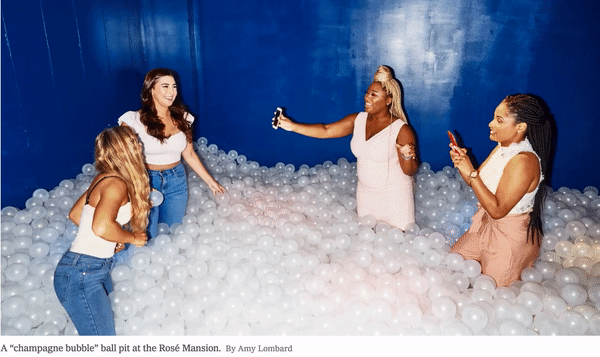 the Experience Economy, the focus was largely on the ‘sex, drugs and rock ‘n’ roll’ and the binge consumption of experience. For further reference see the excellent article in the New York Times (the gif here is taken from) that highlights the ‘Existential Void’ that the experience economy has created.
the Experience Economy, the focus was largely on the ‘sex, drugs and rock ‘n’ roll’ and the binge consumption of experience. For further reference see the excellent article in the New York Times (the gif here is taken from) that highlights the ‘Existential Void’ that the experience economy has created.
The opportunity for a new generation of entrepreneurs, designers and educators to step-up and create alternative offerings that meaningfully transform people is huge. The foundation of the Transformation Economy is the creation of fertile contexts in which people and organizations have the opportunity to do what they’re most passionate about and what they’re good at, and put it in use for the service of others, society, and the planet. In this sense, we see that the Universal Basic Income (UBI) movement is deeply connected to the success of the Transformation Economy.
2.3 Purpose leads transformation
To start with the “purpose” is to define what your project, team, job or organization is in relation to the positive impact that it has on others. It is not what it does or how it does it.

To adopt a Purpose first mindset means to frame what you do much more in terms of serving a purpose rather than serving your customers. This is done by defining the positive impact they have on others as the north star that guides the organization. This is a subtle yet powerful way to step away from the Human Centered Design (HCD) dogma that has dominated the design culture over the last 15 years.
The Experience Economy’s main focus is on customer satisfaction and profit. The organizations that are stepping into the Transformation Economy are broadening their view to focus on serving a more transcendent purpose that comes to life through the collaboration with the people they serve. The role of organizations is to craft a meaningful purpose and design a context for users to stretch themselves towards it. In the Experience Economy the golden rule was: Customer First. In the Transformation Economy the golden rule is: Purpose First.
There is growing statistical evidence confirming the positive impact of purpose-driven business strategies on the bottom line of organizations. Based on a report compiled by consultant Jim Stengel, companies that have a “sense of purpose beyond just making money” paradoxically outperform the market 15-to-1 (Jim Collins and Jerry Porras), the enjoy 46% greater Market share gains (Havas Media Worldwide), companies that link revenue growth to purpose grow 3x faster than the competition (Stengel 50) and display systematically higher stock market performance (Great Places to Work).
Question to ask yourself:
How can your purpose to invite for collaboration with your users?
2.4 Give more autonomy
Autonomy can be described as the experience of freedom from control. As designers this translates into the creation of experiences where people get to reflect, explore, and take actions based on their values, needs, and aspirations.
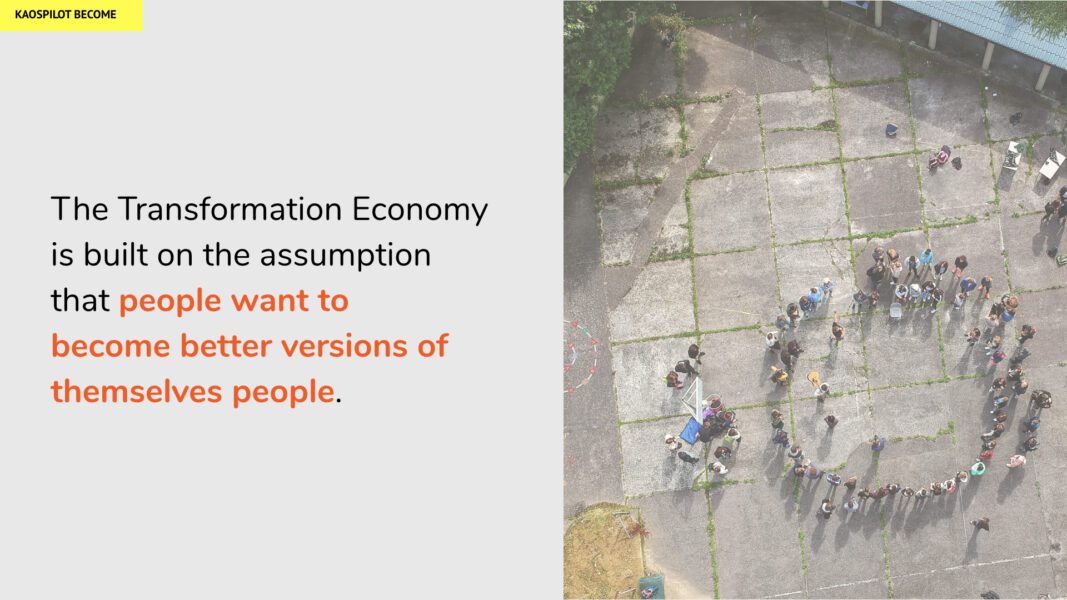
As with all breakthrough innovations, organizations that operate in the Transformation Economy have to adopt new assumptions and beliefs. At the core of these new beliefs is that organizations need to trust that their users want to improve themselves, and thus give users unprecedented autonomy and agency to shape their experience. An early example of this is the industry standard defying move from the founders of Airbnb that users would want to stay with strangers. This new assumption allowed consumers a new realm of opportunity to meaningfully connect with the local people in places they travel.
Another example of this is how we run our Become training. We have taken a step back, as facilitators and designers, to allow much more autonomy than a normally professional training. Participants prepare for each session, and then spend most of the time in intimate peer-groups to develop their case work, and share insights. This gives them much more direct and personal input, and allows them to step out of simply receiving input, into both being coached and meaningfully coaching their peers.
Question to ask yourself:
How can you give more autonomy to your customers/users?
2.5 Design for Sustainability
We are so lucky to have Mikkel Pilgaard Madsen share some of the foundational concepts around designing for sustainability in these short audio bites.
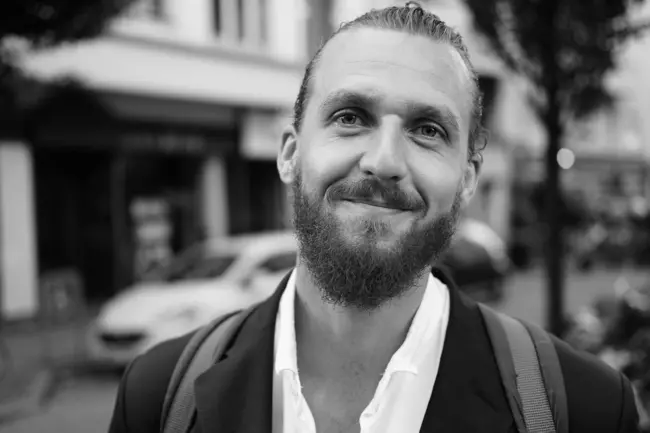 Mikkel Pilgaard Madsen, who is the Director of Design for Sustainability.Next training starting Sep 9th 2021, see more here.
Mikkel Pilgaard Madsen, who is the Director of Design for Sustainability.Next training starting Sep 9th 2021, see more here.
1. The Sustainability Crisis as a Design Challenge
2. Where are you designing from?
3. Design is empowering
4. Sustainability challenge is the greatest opportunity ever
5. You can be part of the solution
2.6 Relationships enable transformation
Relationships are the way in which two or more concepts, objects, or people are connected. To be in a relationship is to be in a state of being connected.

Think of a transformation that you have personally gone through… what relationships enabled this transformation? In our experience the creation of positive relationships is the foundation of transformation. Positive relationships give people the support to transform themselves in ways that they can not individually. The relationship, the space between people, can grow and power the positive transformation of all that are touched by it. In the transformation economy, the ability for organizations to create spaces of genuine community, of host conversations, and vulnerability becomes increasingly important.
At the 3 year Kaospilot education, there is of course a curriculum, a learning journey that is designed, but the most powerful learning is conducted through the relationships. The design of the education is focused on the mantra ‘connection before content’. After graduating the Kaospilots 7 years ago, my best friends are still the people in my ‘team’ that I went through the education with.
Question to ask yourself:
What meaningful experiences could I create for my users to share together?
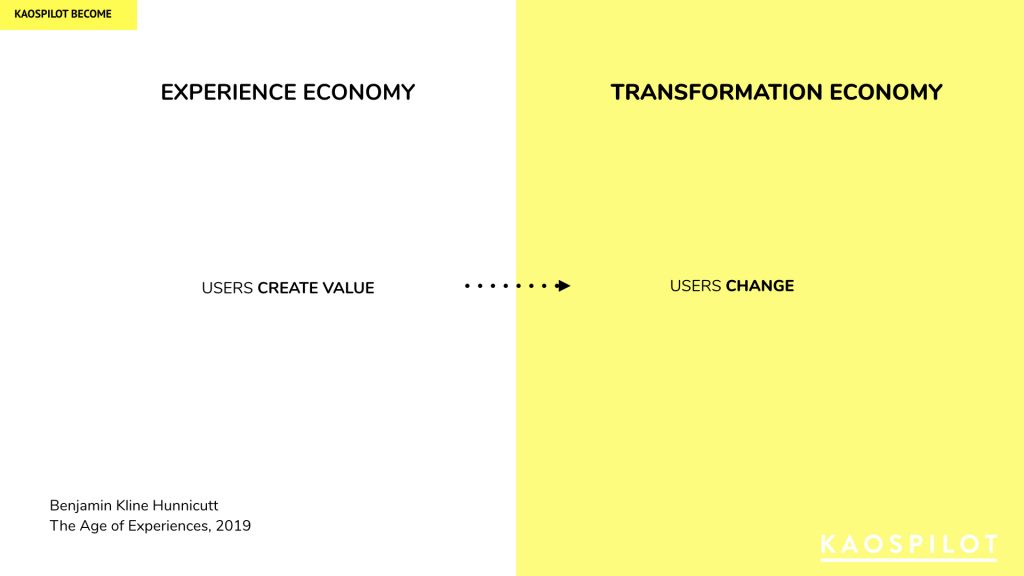

A few compelling examples of organizations stepping into the Transformation Economy:

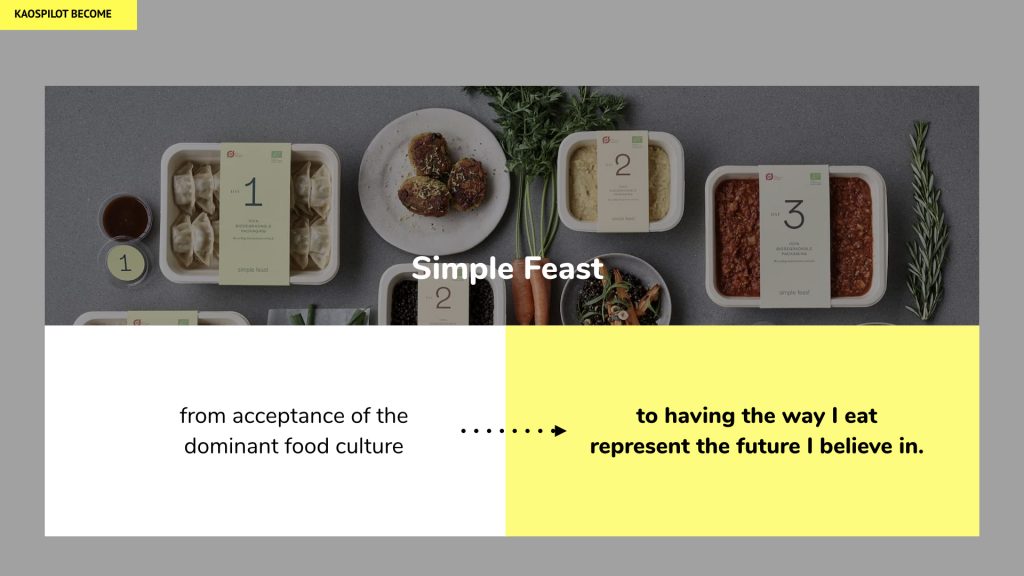
3. Delivering the Meaningful Outcomes:
Introducing the Ripples Model – Design for Transformation
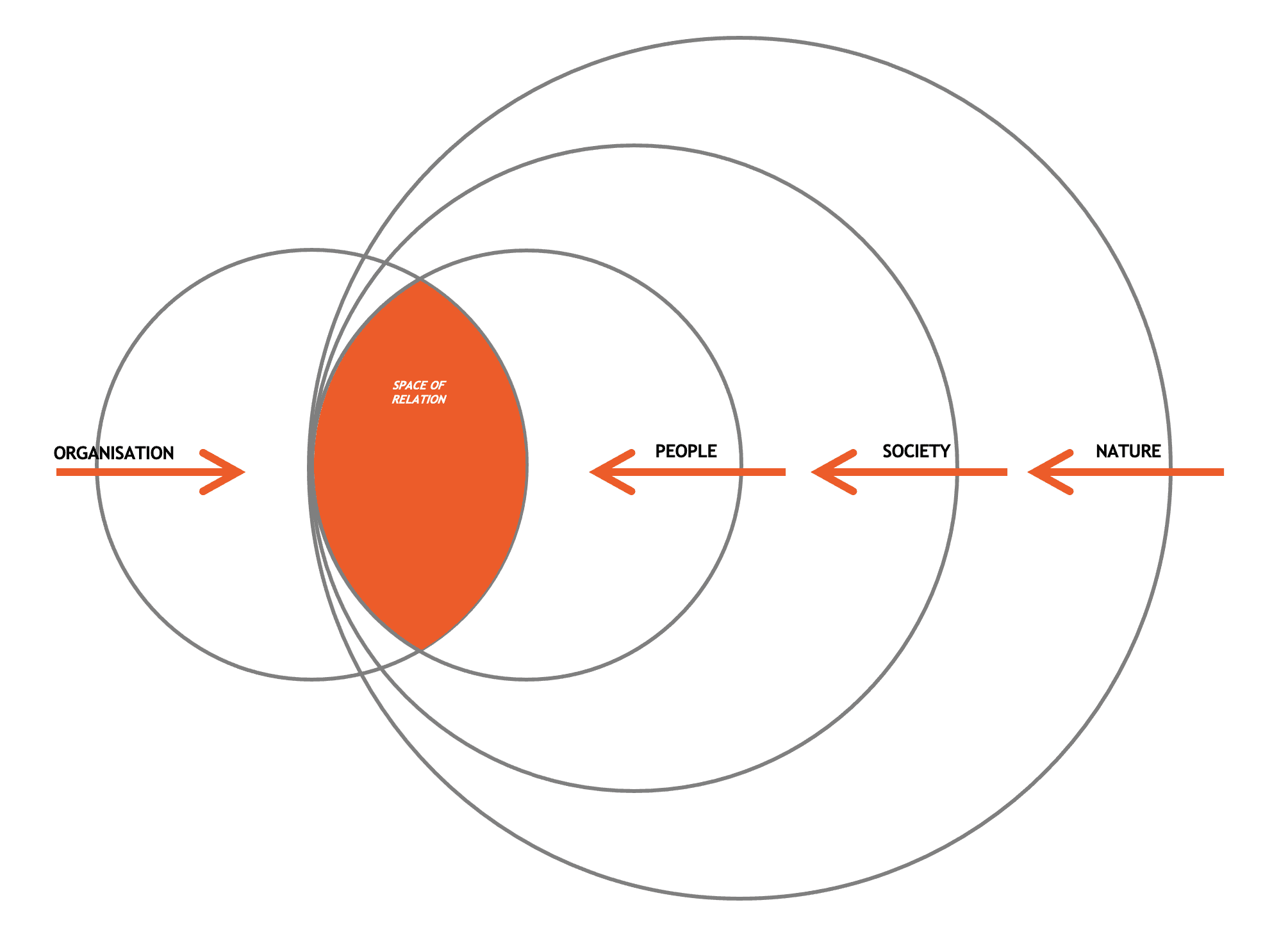
👉Link to Mural Template of the Ripples Model
Finally, we are so excited to introduce you to a tool to help you design a strategy that will bring your work into the Transformation Economy. The aim of the model is to help visualize a change of relationship that you wish to establish with people, society and nature. This model was created as a result of our struggle to build a systematically sound foundation that we could build transformational experiences upon. This is exactly what we hope this model does, to give you a strong foundation with which to build products and experiences for the Transformation Economy!
As you can see in the model, the circles represent the ripples of change that occur when we act with transformative intention. We move from a simple relationship between project and client, for example, to a dynamic relationship between project and system:
person > society > nature
The model also represents the intimate interdependence between the components of a system, people are embedded in society, and in turn society is embedded in the natural context, this nested structure tells us that the well-being of each level of the system depends on the well-being of the others. The ultimate goal of this model is to support organizations to strategically make the relational space increasingly larger, thus incorporating themselves into nature’s own regenerative ecosystem.
Dreaming about the future is an act of hope in itself. When we declare our intention we are opening up a reality that does not yet exist, helping us to set the direction to take
Nicolás Arroyo
Conclusion
The experience we are gathering from our courses and consultancy work tells us that the application of this model is capable of generating renewed visions for organisations that allows them to see their role from a different perspective. It also supports individuals to find greater meaning in the projects they undertake. These mindsets align teams around a common purpose that enables them to generate real dynamics of open collaboration and to think long term, systemically and in terms of consequences, beyond results, in an authentic, critical and responsible way.
Design is a humble trade
– Naoto Fukasawa
The intention to provoke significant changes in our context is always accompanied by the frustration at the scale of the endeavour. Instead of challenging a system loaded with an inertia we propose a simple, and increasingly accepted change of mindset. From transactions to relationships, where we aim to create shared value that helps us to generate ripples that extend beyond us.
)) ) ) ) ) ) ) ) ) )
About us:
This article has been written as a reflection of the work that we are developing at Become in collaboration with hundreds of people from around the world. The Design for Transformation professional program Become.
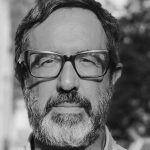 Alberto is one of the co-creators of Become. For the past 20 years Alberto has worked internationally as an artist, designer, business consultant and media executive, collaborating with global brands and launching his own initiatives in the fields of digital media and Experience Design. He is currently a strategic consultant and collaborates with different companies, institutions and international design agencies, he is a professor at the Master of Competitive Social Transformation at the Complutense University of Madrid, partner of Transformational.Studio, a consultancy studio based in the Netherlands, as well as professor of Strategic Design in the Master and Customer Experience and Innovation at the Instituto de Empresa in Madrid.
Alberto is one of the co-creators of Become. For the past 20 years Alberto has worked internationally as an artist, designer, business consultant and media executive, collaborating with global brands and launching his own initiatives in the fields of digital media and Experience Design. He is currently a strategic consultant and collaborates with different companies, institutions and international design agencies, he is a professor at the Master of Competitive Social Transformation at the Complutense University of Madrid, partner of Transformational.Studio, a consultancy studio based in the Netherlands, as well as professor of Strategic Design in the Master and Customer Experience and Innovation at the Instituto de Empresa in Madrid.
 Andy is the program director of Kaospilot Experience Design and Become, speaker and educator. He focuses on designing experiences that build relationships and grow people. Andy works for clients globally. He has had the pleasure of being with Kaospilot Experience Design since the courses inception. Co-founder of the podcast EXP*DSN, Experiential by Design.
Andy is the program director of Kaospilot Experience Design and Become, speaker and educator. He focuses on designing experiences that build relationships and grow people. Andy works for clients globally. He has had the pleasure of being with Kaospilot Experience Design since the courses inception. Co-founder of the podcast EXP*DSN, Experiential by Design.
Acknowledgements:
We want to say a huge thank you to Anne Gorgy a talented design and innovation strategist from Canada, which has provided detailed and valuable feedback for us throughout the process. Raja Chidambaram, the leadership and change consultant from India has also provided us with valuable input on the article. Raja and Anne are alumni of our Become program. Also we want to thank Mikkel Pilgaard Madsen for sparing around the ideas presented and his wonderful audio pieces.

